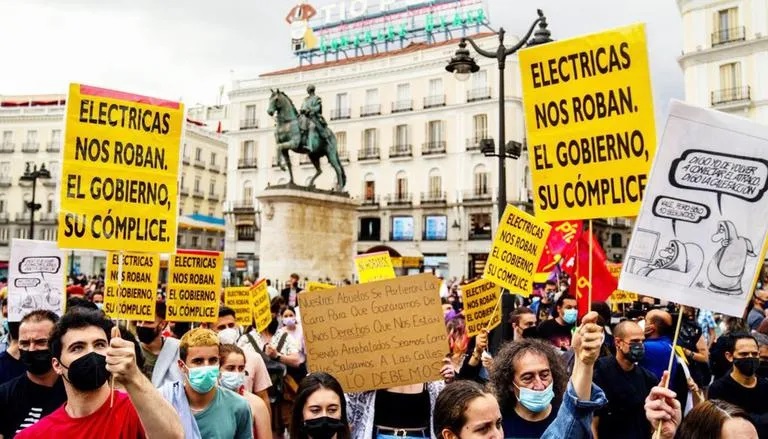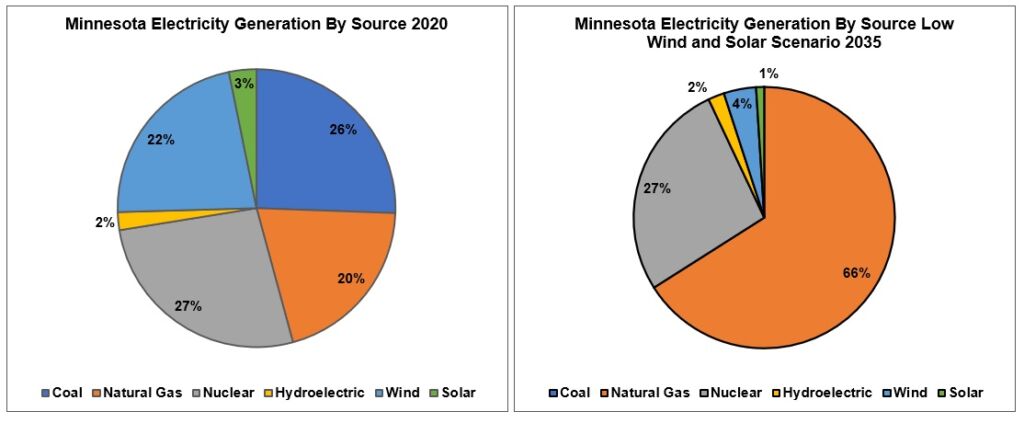European energy prices skyrocket because the wind stopped blowing
Europeans are learning the hard way that attempting to rely upon “reliably unreliable” electricity sources like wind turbines and solar panels has terrible consequences.
Electricity prices are soaring to all-time highs from the United Kingdom to Spain because the wind has stopped blowing, according to the Wall Street Journal. Low wind speeds have left the continent short of electricity, and natural gas prices are surging to new heights due to limited supplies, and winter hasn’t even come yet.
A self-inflicted energy crisis
Europe’s skyrocketing electricity prices were entirely foreseeable and avoidable. However, European leaders have essentially done everything in their power to weaken their electric grids, and become reliant upon natural gas imports from Russia. Relying on Russia for energy is never a good idea — just ask Ukraine.
According to the Financial Times, deliveries of natural gas from Russia have declined this year for reasons fiercely debated in the industry. These reasons range from Russia’s need to refill its own storage to suspicions that it is trying to pressure European governments, including Germany, to approve the start-up of the highly controversial Nord Stream 2 gas pipeline, so Europe can become even more beholden to Russian energy imports.
The Financial Times article continues:
Europe has also been phasing out coal plants in recent years, limiting the opportunity to switch fuels when prices rise. Record carbon prices have also made fuel swaps less attractive because coal emits more carbon dioxide when burnt.
The UK and parts of continental Europe are more reliant on wind turbines for electricity generation, but remarkably still weather in recent weeks has slashed wind’s contribution to the grid. That has largely been backfilled by natural gas, boosting demand for the fuel.
“The power market’s exposure to gas prices has increased,” said James Huckstepp at S&P Global Platts Analytics.
Unfortunately, European nations like Denmark, France, Germany, Spain and the United Kingdom made this day inevitable when they banned the use of hydraulic fracturing for oil and natural gas. This technology has made the United States the leading producer of both oil and natural gas in the world, and by banning this game-changing technology, it was only a matter of time before supplies would run short.
Electricity prices on the rise
Rising natural gas prices are greatly increasing the cost of electricity because much of Europe’s electricity comes from natural-gas-fired power plants.
European countries left themselves open to these price spikes because they unwisely decided to shutter their coal-fired power plants, meaning they cannot easily switch back to these power plants when natural gas prices rise or the wind stops blowing.
The cost of electricity will eventually rise for everyone, but in Europe, large industrial customers will feel the pain first. Rising energy prices will make these firms less competitive with companies located in Asia, where labor and environmental standards are weaker, and firms in the United States, which enjoys low energy prices because of hydraulic fracturing for oil and natural gas.
In Spain, energy prices are so high that people have taken to the streets to protest soaring costs. You’ll remember in 2008 through 2012, Spain was a darling of wind turbine supporters for its status as an early adopter of the technology. We were told increasing the use of wind turbines would lead to lower electricity costs and spark green jobs.
Those predictions did not come true, and now there are protests in the streets and Spain’s left-wing government is scrambling for ways to keep energy prices in check.

Why don’t they turn their wind turbines back up?
This begs the question, why don’t they turn their wind turbines back up? They can’t.

What lessons can Minnesota learn?
Minnesota policymakers should take notice of this example and avoid Europe’s mistakes. Unfortunately, they seem like they want to repeat them.
By prematurely shutting down Minnesota’s coal-fired power plants the state’s utilities and Public Utilities Commission is basically ensuring that we will face the same risk of skyrocketing natural gas and electricity prices when the wind isn’t blowing.
Shutting down the coal plants will make Minnesota extremely dependent upon wind, solar, and natural gas power plants. The diagram below shows electricity generation by source in Minnesota in 2020 and compares it to a hypothetical day with low wind and solar output in 2035 when all the coal plants have closed.

As you can see, Minnesota would be putting 66 percent of our electricity eggs in the natural gas basket if we are overly reliant upon wind, solar, and natural gas in the future. Low wind speeds and snow-covered solar panels could lead to record-high electric bills as natural gas supplies dwindle. If natural gas supplies get low enough, we could see rolling blackouts.
European energy policy is a perfect example of what not to do. Unfortunately, this is the exact strategy the Biden administration is pursuing by limiting domestic energy production and asking Russia and OPEC to be our suppliers.